Discover 20 hidden attractions, cool sights, and unusual things to do in Fez (Morocco). Don't miss out on these must-see attractions: Borj Nord, R'cif Mosque, and Fes el Bali. Also, be sure to include Mosque of the Andalusians in your itinerary.
Below, you can find the list of the most amazing places you should visit in Fez (Fès - Boulemane).
Table of Contents
Borj Nord
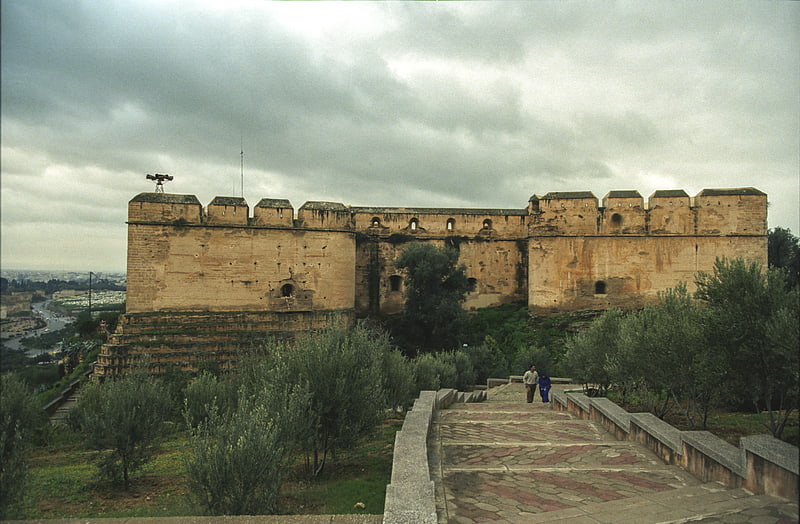
Museum in Fes, Morocco. Borj Nord or Burj al-Shamal, Al-Burj ash-Shamali is a fort in the city of Fez, Morocco. It was first established in 1582 by the Saadi dynasty, modeled after the Portuguese forts in the 16th century. It is among the largest defense structures around the city of Fez and one of the few to incorporate European-style changes in military architecture in the gunpowder age. Today, the fort is open to public as the Museum of Arms.[1]
R'cif Mosque
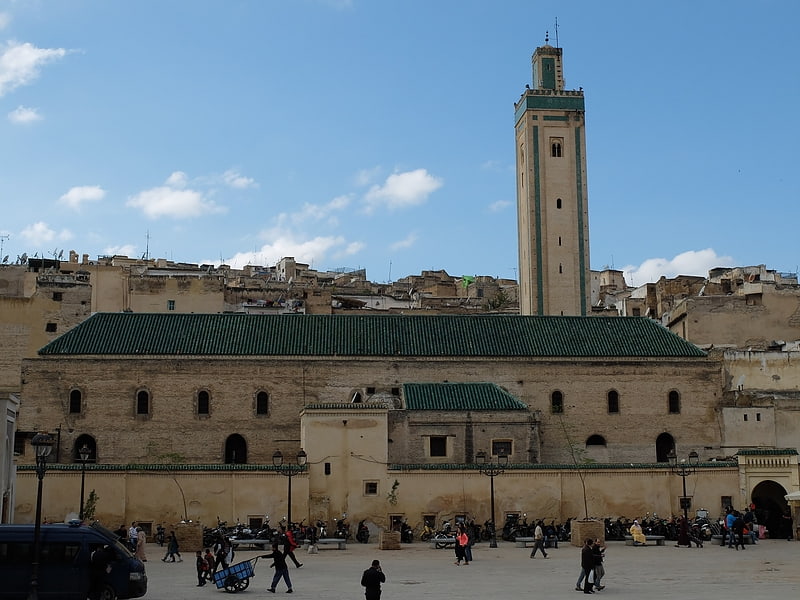
Mosque in Fes, Morocco. The R'cif Mosque is a Friday mosque in Fes el-Bali, the old city of Fez, Morocco. It has one of the tallest minarets in the city and overlooks Place R'cif in the heart of the medina.[2]
Fes el Bali

Also known as: فاس البالي
Fes el Bali is the oldest walled part of Fez, Morocco. Fes el Bali was founded as the capital of the Idrisid dynasty between 789 and 808 AD. UNESCO listed Fes el Bali, along with Fes Jdid, as a World Heritage Site in 1981 under the name Medina of Fez. The World Heritage Site includes Fes el Bali's urban fabric and walls as well as a buffer zone outside of the walls that is intended to preserve the visual integrity of the location. Fes el Bali is, along with Fes Jdid and the French-created Ville Nouvelle or “New Town”, one of the three main districts in Fez.[3]
Address: Fès Maroc, Fez
Mosque of the Andalusians
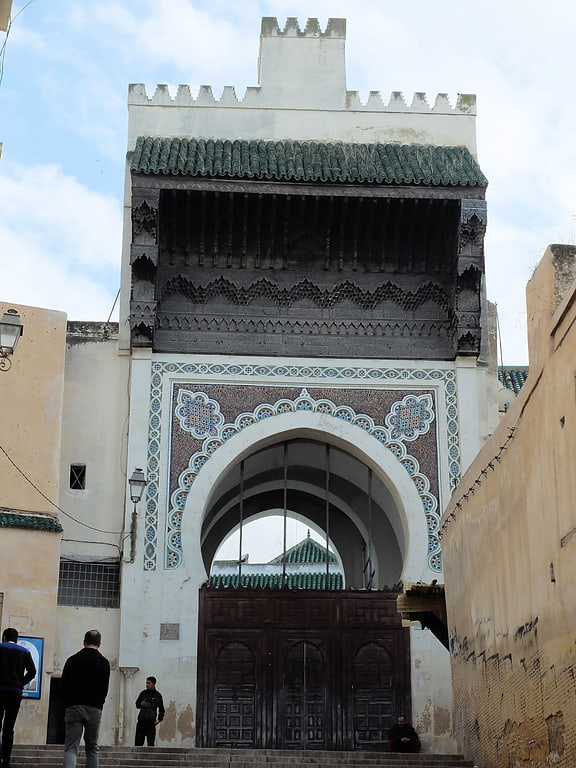
Mosque in Fes, Morocco. The Mosque of the Andalusians or Al-Andalusiyyin Mosque, sometimes also called the Andalusian Mosque, is a major historic mosque in Fes el Bali, the old medina quarter of Fez, Morocco. The mosque was founded in 859-860, making it one of the oldest mosques in Morocco. It is located at the heart of a district which was historically associated with Andalusi immigrants, from which it takes its name. It has been renovated and expanded several times since then. Today, it is one of the relatively few remaining Idrisid-era establishments and one of the main landmarks of the city.[4]
Mnebhi Palace
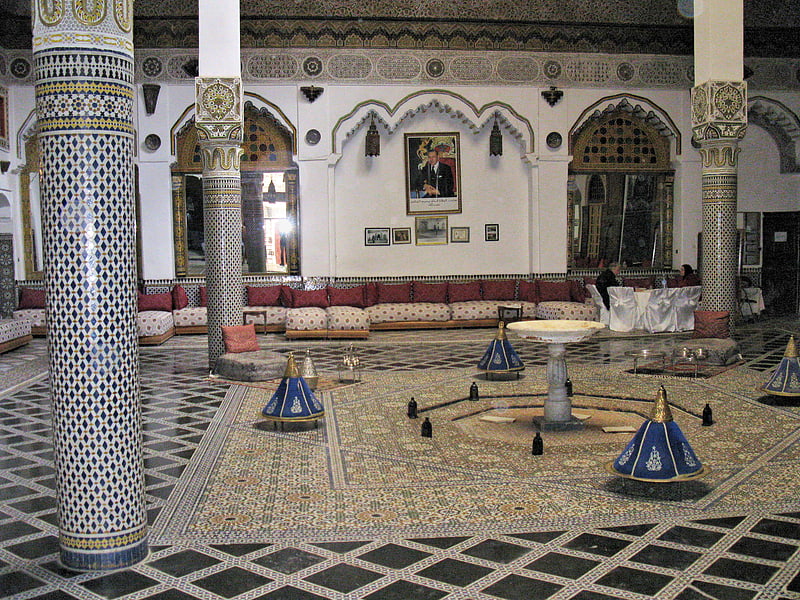
The Mnebhi Palace or Menebhi Palace, also known by its French name Palais Mnebhi, is a historic early 20th-century palace in Fes el-Bali, the old medina of Fes, Morocco. It is notable for both its lavish architecture as well as for being the place where the 1912 Treaty of Fes was officially signed. It is located on Tala'a Seghira street, one of the main souq streets of the city.[5]
Bab Chorfa

The Kasbah An-Nouar or Kasbah Filali is a walled district and former military enclosure in the old medina of Fez, Morocco. Its name means "citadel of the flowers", but it is sometimes also referred to as Kasbah Filala and Kasbah Chorfa. It is one of several fortified military enclosures or kasbahs that were built around the old city of Fez across different periods.[6]
Bou Inania Madrasa
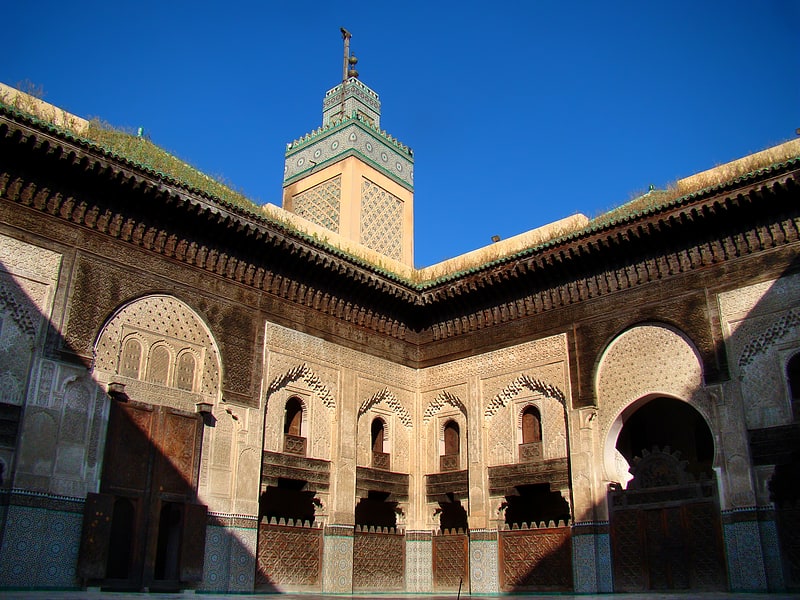
Also known as: المدرسة البوعنانية
Seminary in Fes, Morocco. The Madrasa Bou Inania is a madrasa in Fes, Morocco, built in 1350–55 CE by Abu Inan Faris. It is the only madrasa in Morocco which also functioned as a congregational mosque. It is widely acknowledged as a high point of Marinid architecture and of historic Moroccan architecture generally.[7]
Address: Rue Talaa Seghira, Fes, Fez
Borj Sud
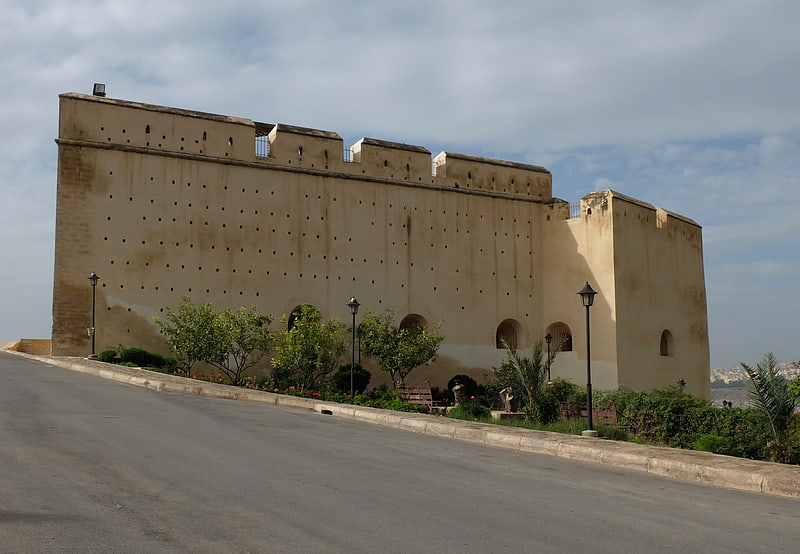
Borj Sud is a fort in the city of Fez, Morocco. It was first established around 1582 by the Saadian dynasty, likely modeled after Portuguese forts of the time. It is located on the hills overlooking the old city from the south, across the valley from its sister fort, Borj Nord, on the hills to the north of the city. Today it is also known as a prime lookout point over the old city.[8]
Ibn Danan Synagogue
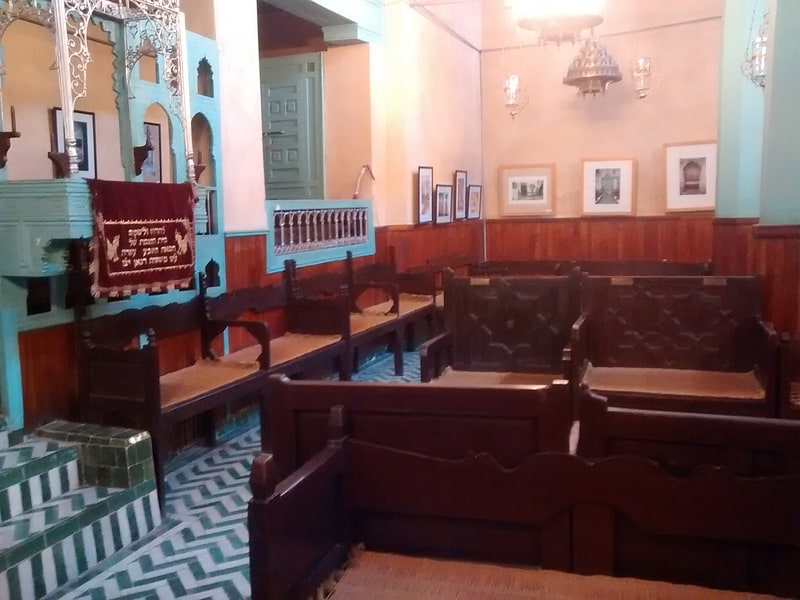
Also known as: كنيس ابن دنان
Simple 17th-century Orthodox synagogue. The Ibn Danan Synagogue is a synagogue in Fes, Morocco, dating from the 17th century. It was built by Mimoun Ben Sidan, a wealthy merchant from the town of Ait Ishaq. The synagogue is located in the Mellah district within Fes el-Jdid, one of the components of the historic medina of Fes.[9]
Jnan Sbil Gardens
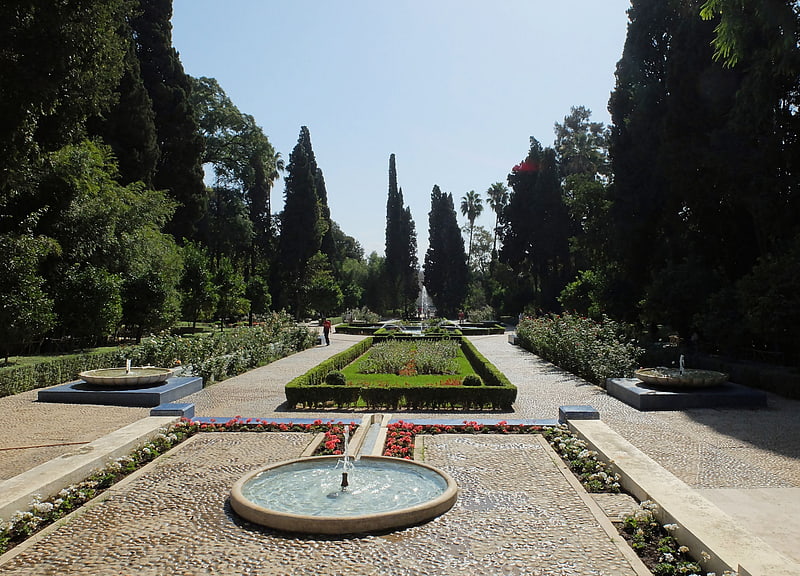
The Jnan Sbil Gardens, also known as the Bou Jeloud Gardens, is public garden in Fez, Morocco, located between Fes el-Jdid and Fes el-Bali, the two sections of the old medina.[10]
Bab Ftouh
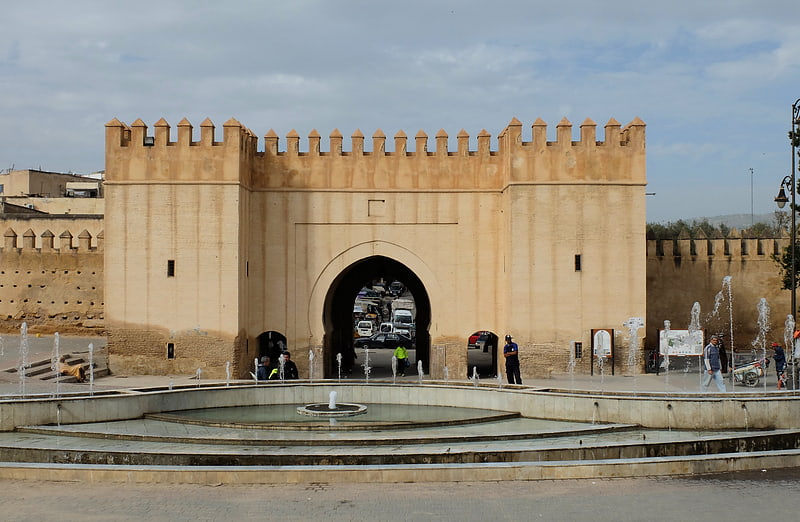
Historical landmark in Fes, Morocco. Bab Ftouh is the main southeastern gate of Fes el-Bali, the old walled city of Fes, Morocco.[11]
Chrabliyine Mosque

The Chrabliyine Mosque is a Marinid-era mosque in Fez, Morocco.[12]
Al Fassiyine Synagogue
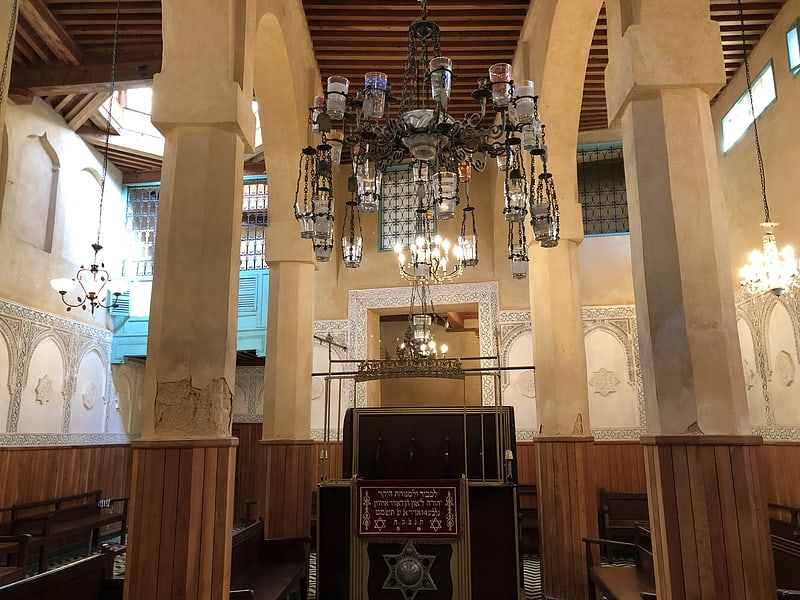
The Al Fassiyine Synagogue or Slat Al Fassiyine is a synagogue located in the Mellah of Fes el-Jdid, within the historic medina of Fez, Morocco. The Slat al-Fassiyine Synagogue was one of the few synagogues where the non-Sephardic rituals of the toshavim continued up until the 20th century.[13]
Zawiya of Sidi Ahmed al-Tijani

The Zawiya of Sidi Ahmed al-Tijani, or Zawiya Tijaniya Al Koubra, is a zawiya, an Islamic religious complex building for education and commemoration, in Fez, Morocco. The building is located inside Fes el Bali, the old medina quarter of the city. More specifically, it is situated in the Al-Blida neighborhood, close to the University of Al Quaraouiyine. It is dedicated to the founder of the Tijaniyyah tariqa from the 18th century, Sheikh Ahmad al-Tijani who is buried in the site. It is among the several other zawiyas dedicated to Al-Tijani. The complex is distinguishable from highly ornamented facades facing the street, and a minaret in turquoise color.[14]
Zawiya of Moulay Idris II
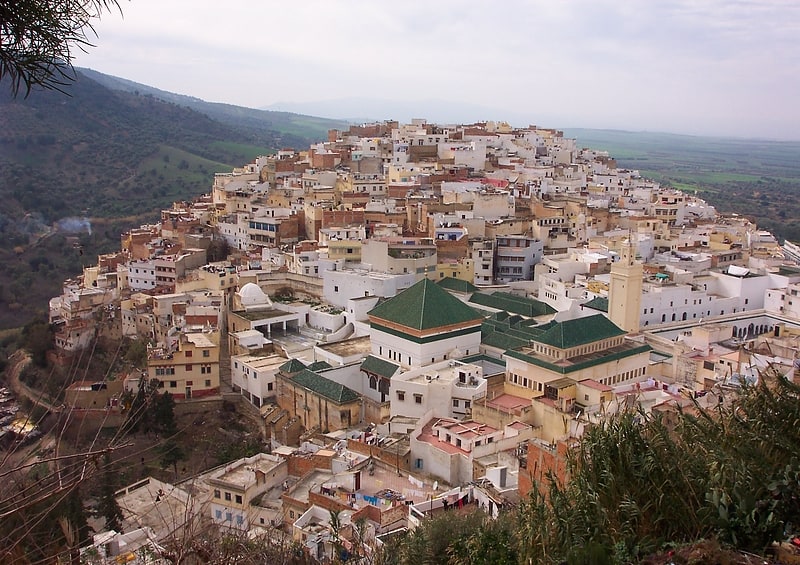
The Zawiya of Moulay Idris II is a zawiya in Fez, Morocco. It contains the tomb of Idris II, who ruled Morocco from 807 to 828 and is considered the main founder of the city of Fez. It is located in the heart of Fes el-Bali, the UNESCO-listed old medina of Fez, and is considered one of the holiest shrines in Morocco.[15]
Bab al-Amer
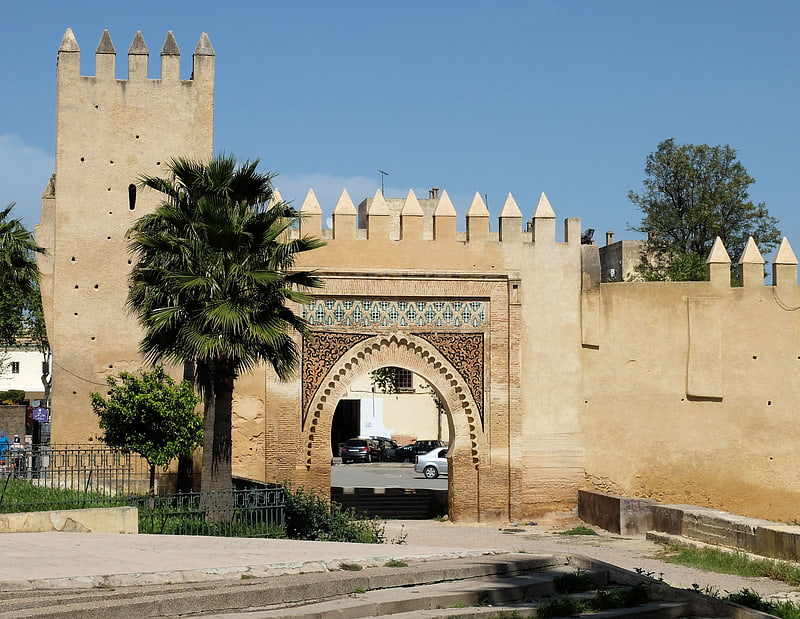
Bab al-Amer is one of the historic city gates of Fes, Morocco. It was the southwestern entrance to Fes el-Jdid, the royal city founded in 1276 by the Marinids west of Fes el Bali.[16]
Place Seffarine
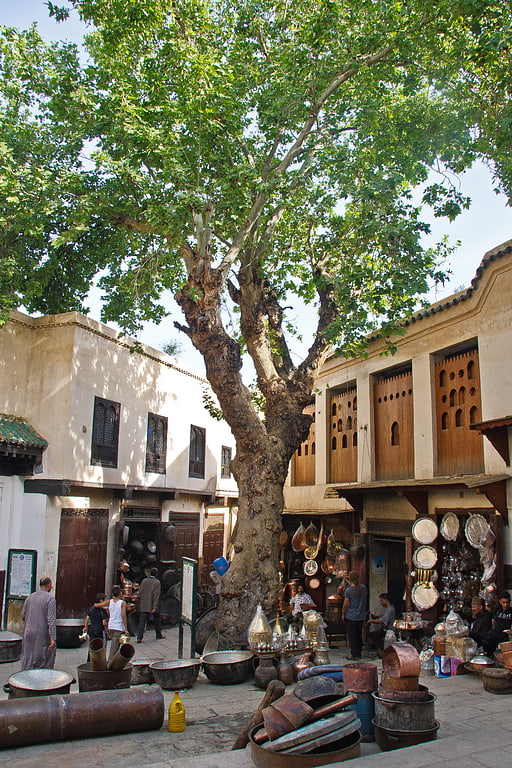
Place Seffarine is a small square in the medina of Fes, Morocco. It is located on the south side of the Qarawiyyin Mosque, close to the Bou Khrareb River which runs through the heart of the medina. The square dates back to the Middle Ages but has also undergone renovations in modern times. It is adjoined by the Qarawiyyin's library to the northwest, by the Saffarin Madrasa to the east, and by the Saffarin Hammam to the southwest. It is named after the coppersmiths who have had their workshops here for centuries.[17]
Kasbah Cherarda
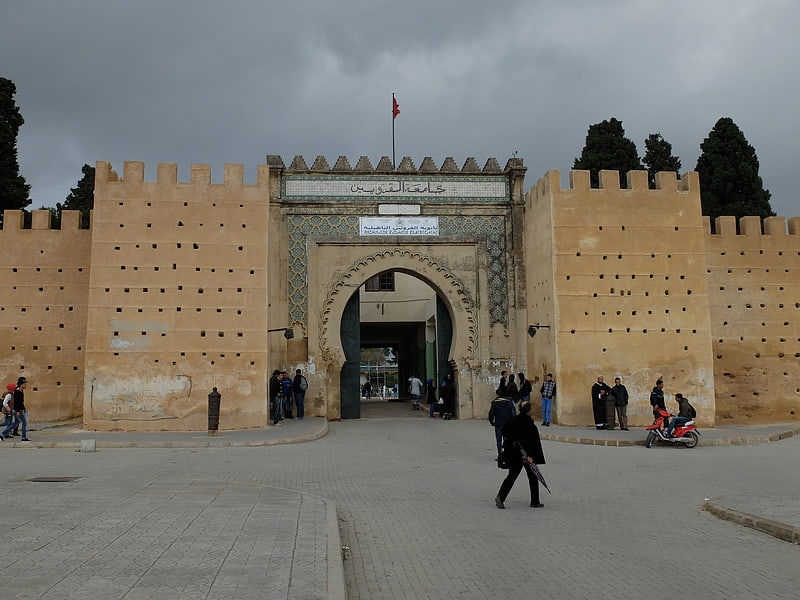
Kasbah Cherarda is a kasbah in the city of Fez, Morocco, located on the northern outskirts of Fes el-Jdid. It was initially referred to as Kasbah el-Khemis, the "Thursday Fort" as there was an open market held every Thursday outside the wall.
The name cherarda (or sherarda) originates from the name of an Arab tribe whose qaid had also previously built a kasbah here in order to protect the tribe's granaries. The current kasbah was created by the Alaouite sultan Mulay al-Rashid after he took over the city in 1666, acting as a garrison fort to house his tribal troops (referred to as guich or "army" tribes). It covers a large rectangular area measuring 400 by 550 meters. The tribe of Ashrafah occupied the fortress during the war between the Sultan and his brother Mohammed, before being deported. It constituted one of a number of similar fortifications established across the outskirts of Fes throughout the city's history. Today the kasbah is occupied by a hospital, a high school, and, since 1959–60, a branch or annex of the University of al-Qarawiyyin.[18]
Bab Guissa Mosque

Mosque in Fes, Morocco. The Bab Guissa Mosque is a medieval mosque in northern Fes el-Bali, the old city of Fez, Morocco. It is located next to the city gate of the same name, and also features an adjoining madrasa.[19]
Al-Hamra Mosque
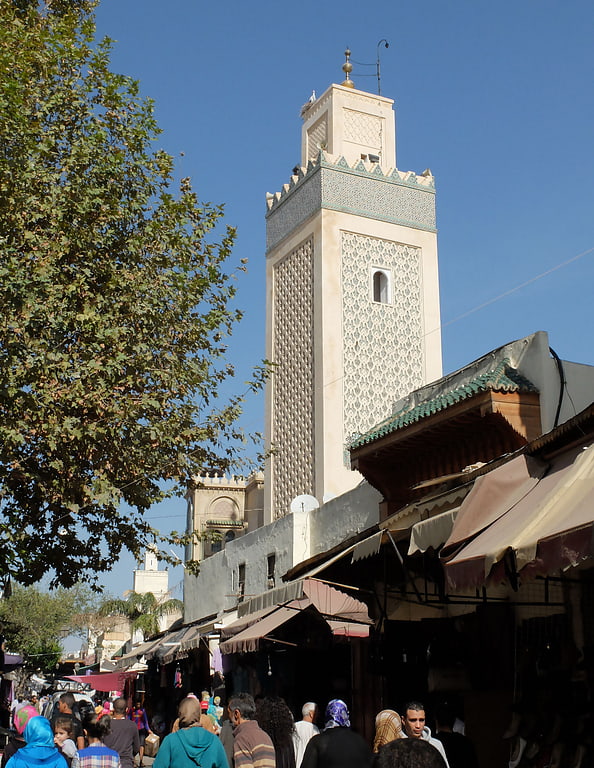
The al-Hamra Mosque or Red Mosque is a Marinid-era mosque in Fes, Morocco. It is a local Friday mosque located on the Grande Rue of Fes el-Jdid, the palace-city founded by the Marinid rulers.[20]